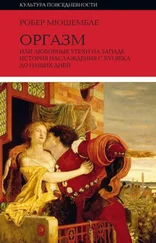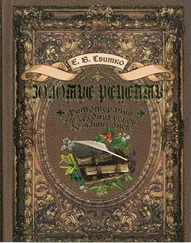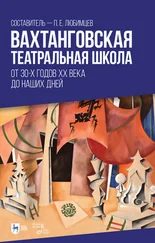Kosterlitz, H. W., and J. Hughes Some thoughts on the significance of enkephalin, the endogenous ligand // Life Sciences 17 (1) 1975: 91–96.
Kris, E. Psychoanalytic Explorations in Art. New York: International Universities Press, 1952.
Linden, D. J. The Compass of Pleasure: How Our Brains Make Fatty Foods, Orgasm, Exercise, Marijuana, Generosity, Vodka, Learning and Gambling Feel So Good. New York: Viking Press, 2011.
Natter, T. Portraits of Characters, Not Portraits of Faces: An Introduction to Kokoschka’s Early Portraits / Oskar Kokoschka: Early Portraits of Vienna and Berlin, 1909–1914. Neue Galerie. New York. 2002.
Ochsner, K. N., Bunge, S. A., Gross, J. J., and J. D. E. Gabrieli Rethinking feelings: An fMRI study of the cognitive regulation of emotion // Journal of Cognitive Neuroscience 14 (8) 2002: 1215–1229.
Ochsner, K. N., Knierim, K., Ludlow, D. H., Hanelin, J., Ramachandran, T., Glover, G., and S. C. Mackey Reflecting upon feelings: An fMRI study of neural systems supporting the attribution of emotion to self and other // Journal of Cognitive Neuroscience 16 (10) 2004: 1746–1772.
Olds, J. “Reward” from brain stimulation in the rat // Science 122 (1955): 878.
Olds, J., and P. Milner Positive reinforcement produced by electrical stimulation of the septal area and other regions of the rat brain // Journal of Comparative and Physiological Psychology 47 (1954): 419–427.
Olsson, A., and E. A. Phelps Social learning of fear // Nature Neuroscience 10 (2007): 1095–1102.
Pavlov, I. P. Conditioned Reflexes: An Investigation of the Physiological Activity of the Cerebral Cortex. London: Oxford University Press, 1927.
Pert, C. B., and S. H. Snyder Opiate receptor: Demonstration in nervous tissue // Science 179 (77) 1973: 1011–1014.
Ramachandran, V. S. The science of art: A neurological theory of aesthetic experience // Journal of Consciousness Study 6 (1999): 15–51.
Rodrigues, S. M., Saslow, L. R., Garcia, N., John, O. P., and D. Keltner Oxytocin receptor genetic variation relates to empathy and stress reactivity in humans // Proceedings of the National Academy of Sciences 106 (50) 2009: 21437–21441.
Rolls, E. T. Emotion Explained. Oxford: Oxford University Press, 2005.
Schachter, S., and J. E. Singer Cognitive, social, and physiological determinants of emotional states // Psychological Review 69 (1962): 379–399.
Schultz, W. Predictive reward signal of dopaminergic neurons // Journal of Neurophysiology 80 (1998): 1–27.
Schultz, W. Multiple reward signals in the brain // Nature Reviews Neuroscience 1 (2000): 199–207.
Singer, T., Seymour, B., O’Doherty, J., Kaube, H., Dolan, R. J., and C. Frith Empathy for pain involves the affective but not sensory components of pain // Science 303 (2004): 1157–1162.
Whalen, P. J., Kagan, J., Cook, R. G., Davis, C., Kim, H., Polis, S., McLaren, D. G., Somerville, L. H., McLean, A. A., Maxwell, J. C., and T. Johnston Human amygdala responsivity to masked fearful eye whites // Science 306 (2004): 2061.
Young, L. J., Young, M., and E. A. Hammock Anatomy and neurochemistry of the pair bond // Journal of Comparative Neurology 493 (2005): 51–57.
Глава 27. Художественные универсалии
и австрийский экспрессионизм
Aiken, N. E. The Biological Origins of Art. Westport, CT: Praeger, 1998.
Cohen, P. Next big thing in English: Knowing they know that you know // New York Times, April 1, 2010.
Darwin, C. On the Origin of Species by Means of Natural Selection. New York: Appleton-Century-Crofts, 1859.
Darwin, C. The Descent of Man and Selection in Relation to Sex. New York: Appleton-Century-Crofts, 1871.
Darwin, C. The Expression of the Emotions in Man and Animals. New York: Appleton-Century-Crofts, 1872.
Dijkstra, B. Idols of Perversity: Fantasies of Feminine Evil in Fin-de-Siècle Culture. New York: Oxford University Press, 1986.
Dissanayake, E. What Is Art For? Seattle: University of Washington Press, 1988.
Dissanayake, E. Homo Aestheticus: Where Art Came from and Why. Seattle: University of Washington Press, 1995.
Dutton, D. The Art Instinct: Beauty, Pleasure, and Human Evolution. New York: Bloomsbury Press, 2009.
Fechner, G. T. Introduction to Aesthetics. Leipzig: Breitkoff & Hartel, 1876.
Hughes, R. Lucian Freud: Paintings. London: Thames and Hudson, 1987.
Iverson, S., Kupfermann, I., and E. R. Kandel Emotional States and Feelings / In: Principles of Neural Science . 4 thed. E. R. Kandel, J. H. Schwartz, T. Jessell, eds. New York: McGraw-Hill, 2000. Pp. 982–997.
Kimball, R. Nice things // Times Literary Supplement, March 20, 2009: 10–11.
Kris, E. Psychoanalytic Explorations in Art . New York: International Universities Press, 1952.
Kris, E., and E. H. Gombrich The Principles of Caricature // British Journal of Medical Psychology 17 (1938): 319–342.
Lang, P. J. The varieties of emotional experience: A meditation on James – Lange theory // Psychological Review 101 (1994): 211–221.
Lindauer, M. S. Physiognomy and art: Approaches from above, below, and sideways // Visual Art Research 10 (1984): 52–65.
Mellars, P. Archaeology: Origins of the female image // Nature 459 (2009): 176–177.
Natter, T. Portraits of Characters, Not Portraits of Faces: An Introduction to Kokoschka’s Early Portraits / In: Oskar Kokoschka: Early Portraits of Vienna and Berlin, 1909–1914. New York: Neue Galerie, 2002.
Pinker, S. How the Mind Works. New York: W. W. Norton, 1999.
Pinker, S. The Blank Slate. New York: Viking Penguin, 2002.
Ramachandran, V. S. The science of art: A neurological theory of aesthetic experience // Journal of Consciousness Study 6 (1999): 15–51.
Ryan, T. A., and C. B. Schwartz Speed of perception as a function of mode of representation // American Journal of Psychology 69 (1) 1956: 60–69.
Riegl, A. The Group Portraiture of Holland. Intro. by W. Kemp. Los Angeles: Getty Research Institute for the History of Art and the Humanities, 1999.
Singer, T., Seymour, B., O’Doherty, J., Kaube, H., Dolan, R. J., and C. D. Frith Empathy for pain involves the affective but not sensory components of pain // Science 303 (2004): 1157–1162.
Stocker, M. Judith: Sexual Warriors: Women and Power in Western Culture. New Haven: Yale University Press, 1998.
Tooby, J., and L. Cosmides Does beauty build adapted minds? Toward an evolutionary theory of aesthetics, fiction and the arts // SubStance 94/95 (30) 2001: 6–27.
Zeki, S. Inner Vision: An Exploration of Art and the Brain. New York: Oxford University Press, 1999.
Глава 28. Творческий мозг
Andreasen, N. C. The Creating Brain: The Neuroscience of Genius. New York: Dana Press, 2005.
Andreasen, N. C. A Journey into Chaos: Creativity and the Unconscious // Mens Sana Monographs 9 (1) 2011: 42–53.
Berenson, B. The Italian Painters of the Renaissance . Oxford: Oxford University Press, 1930.
Bever, T. G., and R. J. Chiarello Cerebral dominance in musicians and nonmusicians // Science 185 (4150) 1974: 537–539.
Bowden, E. M., and M. J. Beeman Getting the right idea: Semantic activation in the right hemisphere may help solve insight problems // Psychological Science 9 (6) 1998: 435–440.
Читать дальше
Конец ознакомительного отрывка
Купить книгу







![Франк Трентманн - Эволюция потребления [Как спрос формирует предложение с XV века до наших дней]](/books/403210/frank-trentmann-evolyuciya-potrebleniya-kak-spros-fo-thumb.webp)




